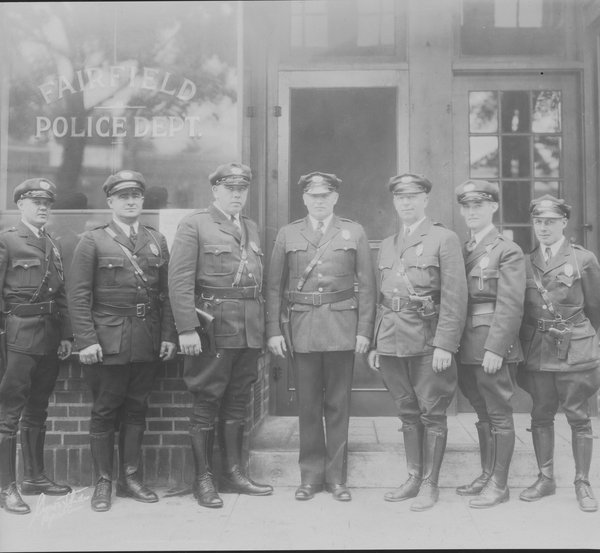Kristen Levithan
Connecticut Explored Inc.
TEACHER'S SNAPSHOT
Course Topics/Big Ideas:
The Structure and Function of State and Local Government
Town:
Avon, Fairfield, Groton, Hartford, New Haven, Shelton, Statewide, Storrs, West Hartford, Westport
Grade:
Grade 3
Lesson Plan Notes
This lesson plan introduces third grade students to the concept of how services in Connecticut communities are funded by local, state, and federal taxes. Through inquiry-based and hands-on activities, students explore the role of taxes in supporting essential community services such as schools, parks, and emergency services. By investigating primary sources and engaging in discussions, students gain a deeper understanding of the connection between taxes and community well-being. The lesson aims to foster critical thinking skills, civic awareness, and active citizenship among students, empowering them to understand their role in contributing to their community’s success.
ESSENTIAL QUESTION
SUPPORTING QUESTIONS
- What are taxes, and why do we need them?
- How are taxes collected in Connecticut?
- What are some examples of services funded by local, state, and federal taxes in our community?
ACTIVITY
1. Begin with a class discussion about the term “taxes” and why we have them. A tax is money paid by members of a community to the government in order to support that community. Share with students that different types of services are paid for with different types of taxes.
- In Connecticut, local taxes are raised primarily through property tax. Property taxes are paid by residents of a town or city on big things they own like their home or car.
- State taxes are raised through state income tax and sales tax. Income tax is money a person pays to the government based on the money they earn. Sales tax is money a person pays to the government based on the cost of something they buy.
- Federal taxes are raised through federal income tax.
2. Introduce the compelling question: “Why do we pay taxes?”
3. Show images from the tool kit of community services. Have students identify the service and ask them about who in the community might benefit from these services. Ask students to share their ideas of how these services might be funded.
4. Introduce the idea of students becoming “community service investigators” to discover how taxes fund services.
5. Divide the class into small groups and assign each group a local illustrated print resource (e.g., newspaper, local magazine, community directory, phone book, etc.) to investigate.
6. Have students flip through the resource, identifying any community service that might be funded by taxes. Ask students to mark the page on which the service was found with a sticky note. Encourage students to hypothesize about which level of taxes might fund that resource: local, state, or federal, writing L (local), S (state), or F (federal) on the sticky note to record their hypotheses.
7. Display a three-column chart with each column labeled Local, State, and Federal, respectively.
8. Have each group share the community services they found in their source and how they think they are funded. Invite class discussion: Do other groups agree with their hypotheses? Why or why not?
9. After all groups have shared, encourage students to brainstorm other community services that taxes might fund and add them to the chart, addressing any questions and misconceptions that arise. Answers might include:
Local:
- schools
- public libraries
- public parks and recreation
- police and fire departments
- street maintenance and snow removal
State:
- education funding
- healthcare for lower-income residents
- road maintenance
- public transportation
- highway construction
- state police and emergency services
- state parks and natural resources
Federal:
- social security
- Medicare
- military and national defense
- veterans’ services
- grants to states to support transportation, education, healthcare, and
environmental protection
10. Revisit the compelling question: “Why do we pay taxes?”
OPPORTUNITIES FOR ASSESSMENT
- Ask students to propose a new community service or resource to be funded by tax dollars. Have them write a paragraph explaining why their idea should be funded, possibly including what other service or resource could be cut in order to pay for theirs. Students should share their idea at home, getting feedback from their families, and then present their idea to the class. After everyone’s ideas have been shared, students should vote on which new service or resource to fund with tax dollars.
- Challenge students to come up with creative projects to support or improve a local service (e.g., organizing a community clean-up day for a park). Encourage them to plan, budget, and present their projects to the class, considering the costs and potential funding sources.
- Have students interview someone whose work is supported by taxes (e.g., librarian, fire fighter, mail carrier, soldier). Students should ask questions to help them understand the individual’s job better. How do taxes help fund their work?
RESOURCE TOOL KIT

Hartford Housing Authority, Children on Playground Equipment, 1972, photograph, Hartford History Center, Hartford Public Library.

Sycamore Park Pool, photograph, Avon Free Public Library.

Original Fairfield Police Department, 1930, photograph, Fairfield Museum and History Center.

Onlookers at fire, Shelton, photograph, Connecticut Museum of Culture and History.

Snow plow on North Quaker Lane, West Hartford, 1933, photograph, Connecticut Museum of Culture and History.

Guide to the University of Connecticut, 1981, pamphlet, Archives and Special Collections at the Thomas J. Dodd Research Center, University of Connecticut Library.

Dewberry, City of New Haven Bridge Inventory Appendices A-C Bridges 1-20, November 2008, Southern Connecticut State University.

Sherwood Island State Park, 1954, postcard, Westport Public Library.

Nautilus, 2017, photograph, Connecticut State Library.

Civil War Soldiers on New Haven Green, 1865, photograph, Connecticut Museum of Culture and History.
ADDITIONAL RESOURCES
Places to GO
Visit one of Connecticut’s 142 state parks and forests.
Check out one of the sites in Connecticut managed by the National Park Service or take a hike on one of the National Scenic Trails that run through Connecticut:
- Appalachian Trail
- New England Trail
- Washington-Rochambeau Revolutionary Route
- Weir Farm National Historic Park, former home of American Impressionist J. Alden Weir, Wilton
Things To DO
Visit your town’s website, and look for information about property taxes. How often do residents pay property taxes?
Read about Abby and Julia Smith, two 19th-century sisters from Glastonbury who protested against having to pay property taxes before women had the right to vote:
The Taxing Case of the Cows: A True Story About Suffrage by Pegi Deitz Shea and Iris Van Rynbach, New York: Clarion Books, 2010.
Pay a virtual visit to the Smithsonian National Postal Museum and learn about the history of the U.S. postal service through the online exhibition, “About Postal Operations.”
Websites to VISIT
Connecticut State Department of Revenue Services: “Information for Individuals”
Articles to READ
Katherine J. Harris, “‘No Taxation without Representation’: Black Voting in Connecticut,” Connecticut Explored, Spring 2016.
Frederick A. Hesketh, “Traveling Hartford-Area Turnpikes—Then, Now, or Never? Plans for a Beltway Around Hartford Hit a Dead End,” Connecticut Explored, Spring 2008.
“Vivien Kellems Takes On the IRS,” ConnecticutHistory.org, April 18, 2022.
Molly May, “The Smith Sisters, Their Cows, and Women’s Rights in Glastonbury,” ConnecticutHistory.org, March 12, 2021.



